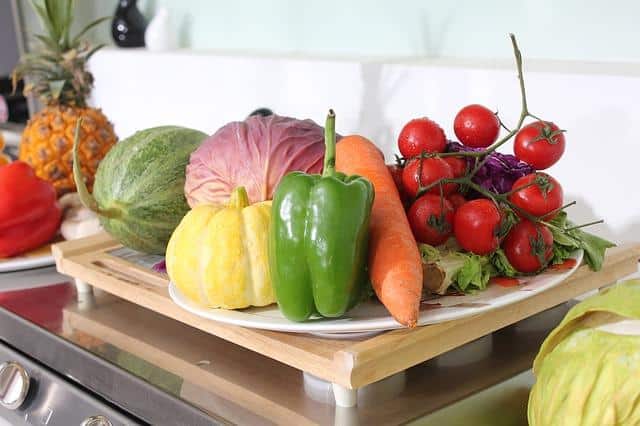By late fall and early winter it is common for backyard gardeners to see a steadily diminishing harvest. This will mean that unless you “put up” enough vegetables or grow a winter crop, you will have to search somewhere else.
Where are you going to find your favorite healthy fruits and veggies? Let’s take a look at some of your options:
Supermarket
Grocery stores always have a variety of vegetables, but when you are looking to purchase organic vegetables, you can notice quite the jump in price. Words of advice would be to buy what is in season. Usually, in-season foods are reasonably priced. Many vegetables, as well as fruit, peak in the fall and winter. If you avoid foods that are not in season, you avoid imported foods which are probably sprayed with unwanted pesticides (usually sprayed when entering the country).
Winter Farmer’s Markets
There are farmer’s markets year-round, and though you may not fancy heading out to a market in the snow, they are a great place to find fresh vegetables. You may have to look for them but they are available. They will have organic and in-season produce, as well as festive foods. Not only are they good for food shopping, but you will often find a variety of jams, honeys, wreaths and seasonal items. It is a great time to do festive shopping, especially for the food lover!
Community Support Agriculture
Community Support Agriculture, or CSA, can be compared to buying food from a local farm. You pay a fee, and then receive your part of the produce when it is ready. The benefits of CSA are limitless, but one major one benefit is that you are guaranteed to get local and organic produce. You may even get some new types of vegetables or food to try.
Grow Your Own
Of course, the easiest place of all to find winter vegetables is in your very own garden. It doesn’t have to be your backyard; there are container gardens, cold frames, greenhouses and many other winter garden ideas.
Get The Best Deals On Non-GMO Heirloom Seeds Right Here!
You can make your own winter garden if you don’t want to give up on the growing season just yet. There is a pretty impressive list of vegetables that can grow – or at least be harvested — during the winter with the right care. They are all vitamin-rich and full of anti-oxidants.
Tips for Choosing Vegetables at the Grocery Store
If you have to buy vegetables from the supermarket or grocery store, here are some pointers to get the best produce possible.
Always get the freshest vegetables, no matter where they are from.
You can buy beets with the tops still on. They should be round and firm, with a bright, deep color. If there are tops on the bunch, check the condition of the leaves. Question the freshness if the leaves are wilted or rotting. You can cook the leaves just like spinach leaves.
Squash should be well-developed, with a tough rind. They should be heavy for the size of the squash. There should be no punctures, cuts, soft spots or any mold.
You want to pick firm, smoothly rounded carrots with no cracks. Their color should be bright orange. It is recommended to purchase carrots with the tops still on, as carrots lose moisture through the leaves. You can add the carrot tops to salads.
Sweet potatoes should be a light color all over, smooth and bright. Avoid any with holes, marks and cuts as these will allow the vegetable to rot quickly.
Picking a radicchio starts at the base. The base should be firm and while, with no blemishes on the leaves and any holes or brown marks.
This New All-Natural Fertilizer Doubles Garden Production!
With citrus fruits, smell is everything. They should be fresh and fragrant, firm and heavy with no blemishes.
When looking for fresh kale, look for rich, green leaves that are firm with no brown markings. The stem should not be dry and cracked. Avoid purchasing pre-packaged kale.
Brussels sprouts have a bright green color, with the outer layer of leaves being tight together. Sprouts should be firm, with no blemishes.
Large, heavy pomegranates usually have the juiciest seeds. There should be no blemishes, and the fruit should have a leathery appearance. The fruit also should be a deep red, not pale or light colored. Pick a round one, as the flat ones are more than likely dried out.
When the need arises to purchase vegetables from the grocery store, don’t worry, you will soon be able to begin planting again. In the meantime, remember to pick the freshest vegetables possible.
What advice would you add? Share your tips in the section below:
Every Year Gardeners Make This Avoidable Mistake — But You Don’t Have To. Read More Here.
